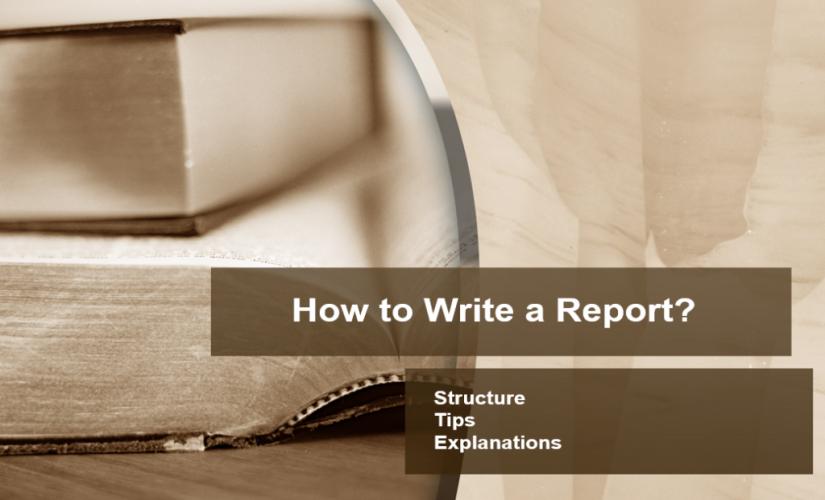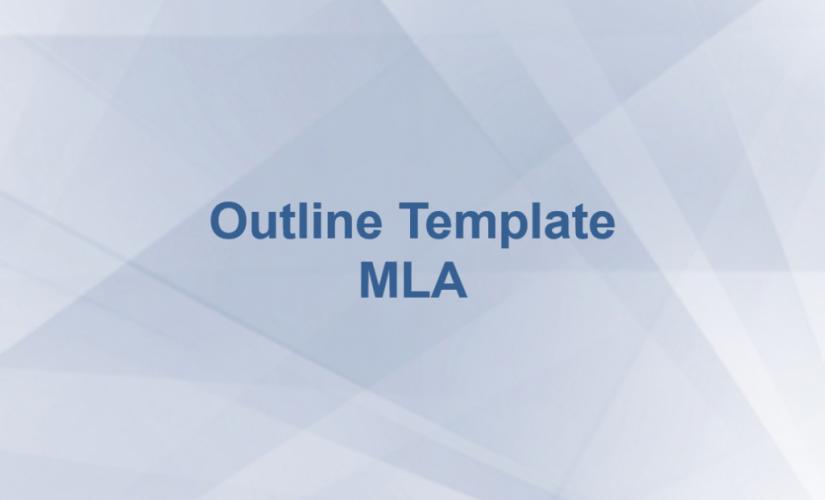A report presents accurate information related to an investigation or research. Basically, such papers are essential in solving problems or making effective decisions in various fields of study. In this case, the five elements of report writing are a title, introduction, methodology, findings, and conclusion. As such, if people know how to write such a paper, they provide clear and accurate information. Besides, good papers should have a well-organized structure with clear headings. In turn, a target audience should understand a particular content of an entire document. As a result, a compelling report must have an introduction, findings and discussion, conclusion, and recommendations.
What Is a Report and Its Purpose
According to its definition, a report is a well-structured document that presents information in a clear and concise manner for a specific audience and purpose, similar to example of a personal narrative essay. Basically, such a composition typically involves a collection, analysis, and presentation of data, findings, and recommendations (Siochrú, 2023). These works are commonly used in business, academic, technical, and governmental contexts to present findings, progress, or results related to specific tasks, projects, or research. As such, the main purpose of writing a report is to provide a clear and concise account of an event, situation, or study, enabling a reader to understand deeper contexts, outcomes, and implications (Reid, 2018). Moreover, such documents often follow a standard format with particular sections, such as an introduction, methods, results, discussion, and conclusion, ensure clarity and consistency in a presentation of information, and help stakeholders to make informed decisions, track performance, identify issues, and plan strategically. In terms of pages and words, the length of a report depends on academic levels, fields of study, and assignment writing requirements, while general guidelines are:
High School
- Length: 4-10 pages
- Word Count: 1,000-2,500 words
College
- Length: 8-12 pages
- Word Count: 2,000-3,000 words
University (Undergraduate)
- Length: 10-20 pages
- Word Count: 2,500-5,000 words
Master’s
- Length: 16-40 pages
- Word Count: 4,000-10,000 words
Ph.D.
- Length: 40-300 pages (varies greatly depending on a particular field and specific requirements)
- Word Count: 10,000-75,000 words
Types
| Type | Purpose |
|---|---|
| Informational | To present straightforward information or data without analysis or recommendations. |
| Analytical | To analyze information or data to provide insights, conclusions, and recommendations. |
| Progress | To update on a particular status of a project or task, detailing progress, milestones, and any issues. |
| Research | To document obtained findings of a detailed investigation or study on a specific topic. |
| Technical | To provide technical data and information, often for engineering or scientific purposes. |
| Feasibility | To assess a practicality and potential success of writing a proposed project or solution. |
| Evaluation | To review and assess a particular performance, outcomes, or impact of a project or program. |
| Incident | To record details of an unexpected event or incident, often for legal or safety purposes. |
| Annual | To summarize an organization’s activities, achievements, and financial performance over a year. |
| Audit | To examine and evaluate financial records and practices for accuracy and compliance. |

Format
| Section | Content |
|---|---|
| Title Page | Includes a report’s title, your name, date, and other relevant details, like course name or institution. |
| Abstract/Executive Summary | Covers a brief summary of an entire paper, including its writing purpose, methodology, and key findings (typically 150-250 words). |
| Table of Contents | Lists all document’s sections and sub-sections with page numbers. |
| Introduction | Introduces a specific topic, writing purpose, and scope of a paper, provides background information, and states its objectives. |
| Literature Review | Summarizes existing research and knowledge related to a chosen topic, highlighting gaps a document aims to fill. |
| Methodology | Describes specific methods and procedures used to collect and analyze data. |
| Results | Presents obtained research findings or their analysis, often with a help of tables, graphs, and charts. |
| Discussion | Interprets study results, discussing their implications, limitations, and significance. |
| Conclusion | Summarizes document’s findings and their relevance. |
| Recommendations | Offers suggestions for future action or writing further research based on study findings. |
| List of References | Lists all the scholarly or other sources cited in a document, following a specific citation style (e.g., APA, MLA, Chicago/Turabian, Harvard, etc.). |
| Appendices | Contains supplementary materials, such as raw data, detailed calculations, or additional notes. |
Note: Some sections can be added, deleted, or combined with each other, depending on its purpose and scope of research. In this case, a standard structure of a report includes a title page, abstract, table of contents, introduction with a thesis statement or research problem, literature review, methodology, results, discussion, conclusion, recommendations, references, and appendices (Elling et al., 2019). Moreover, the three main types of reports are informational, analytical, and progress documents. Hence, a report is a structured document that systematically presents information, analysis, and findings on a specific topic for a targeted audience. In turn, to start a report, people begin with a clear and engaging introduction that outlines a specific purpose, scope, and objectives of a document, providing relevant background information.
Basic Steps on How to Write a Report
To write a report, people gather and analyze relevant information, organize their findings into a clear structure with an introduction, body sections, and a conclusion, and ensure they follow any specific guidelines provided.
- Understand an Assignment: Carefully read assignment guidelines to comprehend a particular purpose and requirement of a report.
- Select a Topic: Choose a focused topic that aligns with assignment’s objectives.
- Conduct Research: Gather data and information from reliable sources to support your paper.
- Formulate a Thesis Statement: Create a clear and concise statement that reflects a main argument or purpose of your document.
- Create an Outline: Plan a specific structure of your composition to ensure a logical flow of information.
- Write an Introduction: Introduce a specific topic, provide background information, and present your thesis statement.
- Develop a Body: Elaborate on your research findings and analysis, organized into sections with appropriate headings.
- Analyze Data: Interpret an obtained data to draw meaningful conclusions that support your thesis.
- Write a Conclusion: Summarize key findings, restate a thesis, and suggest actions or further research.
- Revise and Proofread: Review a report for clarity, coherence, and errors, making necessary revisions and corrections.
Structure
Introduction
A report should have an introduction that communicates a specific context and primary purpose. For example, an introductory section should outline a specific framework of a paper (Busse & August, 2020). In principle, a paper should define terms and set limits for an entire analysis. Besides, an introduction should identify how one gathered the information used in a paper (Warner, 2019). In turn, such a paper must identify its primary purpose for writing. As a result, readers should identify a real significance of a document. Thus, an introduction section must provide background information and a specific use of a paper. In turn, some examples of sentence starters for beginning a report are:
- A particular purpose of this report is to provide a comprehensive analysis of past and current trends that challenge … .
- This paper aims to examine an overall effectiveness of various strategies implemented to address … .
- In this project, we will explore significant factors contributing to a particular success of … .
- A primary objective of this document is to provide an in-depth analysis of a potential impact of recent developments in … .
- This analysis investigates a direct impact of new technologies on a particular efficiency and productivity of … .
- This examination presents a detailed overview of a new research conducted on a correlation between … .
- This overview is designed to evaluate an effectiveness of current policies and recommend potential improvements in … .
- In this paper, we will discuss current findings of our recent study on consumer behavior patterns in … .
- The following study outlines key aspects of an implementation process and its outcomes in a particular context of … .
- This evaluation aims to shed light on underlying causes of issues faced by an industry and propose viable solutions for … .
Findings
A good report should contain a findings section that covers main issues in a discussed investigation. For instance, a body part must reveal what a scholar found during an entire study (Iskander et al., 2018). Basically, a person should state only relevant facts to follow the rules of how to write a report. Besides, one should use illustrations to present findings without providing appropriate interpretations. For instance, people use tables, graphs, or diagrams to give their results to readers (Reid, 2018). In turn, visual illustrations must be relevant to a particular focus of a document. Moreover, one must arrange the evidence in a logical order based on paper’s headings. Hence, a final document must have a results section presented clearly and logically.
Discussion
A good report should have a discussion section that interprets main findings. For instance, one should examine, take to a specific meaning, and evaluate the results obtained (Siochrú, 2023). In this case, a discussion section must draw together different parts of study findings, covering the rules on how to write a report. Besides, one may use information from other credible or secondary sources to interpret obtained findings. Therefore, a discussion section should discuss and explain main results.
Conclusion
A good paper should have a conclusion section that identifies key findings. For instance, this part must provide deductions from a discussion section (Elling et al., 2019). In essence, a concluding section should relate to main objectives if people understand how to write a report. Besides, this paragraph must follow an order of facts in study findings and discussions logically. As such, a paper should have an appropriate conclusion that must lead to recommendations.
Recommendations
Compelling reports must contain a writer’s opinion about possible solutions to a specific research problem. For instance, if people are familiar with basic principles of how to write a report, they state plausible solutions to a primary problem (Siochrú, 2023). In this case, a proposal should explain what should be done to address a researched issue. Besides, a recommendations section should identify who should take suggested actions at the most appropriate time. As a result, good papers should propose possible solutions to primary research problems.
What to Include
| Element | Description |
|---|---|
| Graphs and Charts | Visual representations of data to make complex information easier to understand. |
| Tables | Organized data in rows and columns for a clear, well-organized, and concise presentation of information. |
| Images and Diagrams | Organized data in rows and columns for a clear and concise presentation of information. |
| Case Studies | Detailed examples that illustrate specific instances or applications relevant to writing about a paper’s topic. |
| Quotes | Direct statements from experts or relevant stakeholders to support arguments or provide insights for writing. |
| Statistical Data | Numerical information and statistics to back up claims and provide evidence for analysis. |
| Infographics | Combined visual and textual information to simplify complex data and enhance understanding. |
| Footnotes | Additional notes or references that provide further information without cluttering a main text. |
| Interviews | Insights and direct quotes from interviews with experts or key stakeholders. |
| Surveys and Questionnaires | Results and analysis of surveys conducted to gather primary data from relevant groups. |
| Comparative Analysis | Comparison of different cases, studies, or data sets to highlight contrasts and similarities for writing. |
| Problem Statements | Clear descriptions of some problems or challenges that a current study addresses. |
| Budget Estimates | Financial projections or breakdowns relevant to a document’s topic or findings. |
| Ethical Considerations | Comparison of different cases, studies, or data sets to highlight contrasts and similarities in writing. |
| Limitations | Explanation of potential constraints or limitations encountered during a research process. |
Common Mistakes
- Lack of Clear Structure: Failing to organize a report into clear sections can make it difficult for readers to follow.
- Insufficient Research: Not gathering enough data or relying on unreliable sources weakens a document’s credibility.
- Overly Complex Language: Using jargon or overly complex language can confuse readers and obscure paper’s main points.
- Ignoring an Audience: Writing without considering a target audience’s knowledge level and interests can result in a paper that is either too basic or too advanced.
- Poor Thesis Statement: A vague or weak thesis statement can make a composition unfocused and unclear.
- Inadequate Analysis: Simply presenting data without analyzing and interpreting it fails to demonstrate a document’s significance.
- Lack of Proofreading: Neglecting to proofread can leave grammatical errors, typos, and inconsistencies in writing a document.
- Weak Introduction or Conclusion: A weak introduction fails to engage readers, and a weak conclusion does not effectively summarize key points.
- Ignoring Formatting Guidelines: Not adhering to formatting guidelines, such as APA, MLA, Chicago/Turabian, or Harvard, can make a report look unprofessional and hard to read.
- Insufficient Citations: Failing to properly cite sources can lead to accusations of plagiarism and weaken a document’s authority.
Summing Up
Writing a good report relies on a well-organized structure with appropriate sections. Firstly, a compelling paper must have an introduction that provides background information for an entire paper. Secondly, findings and discussion parts allow a target audience to understand the data collected. Thirdly, conclusion and recommendations sections help to show possible solutions to a specific problem addressed in a paper. Thus, these sections allow people to learn how to write a report.
References
Busse, C., & August, E. (2020). How to write and publish a research paper for a peer-reviewed journal. Journal of Cancer Education, 36(5), 909–913. https://doi.org/10.1007/s13187-020-01751-z
Elling, R., Andeweg, B. A., Swankhuizen, C., De Jong, J., & Van der Linden, K. (2019). Report writing for readers with little time. Routledge.
Iskander, J. K., Wolicki, S. B., Leeb, R. T., & Siegel, P. Z. (2018). Successful scientific writing and publishing: A step-by-step approach. Preventing Chronic Disease, 15, 1–6. https://doi.org/10.5888/pcd15.180085
Reid, M. (2018). Report writing. Palgrave Macmillan Education.
Siochrú, C. O. (2023). Student guide to writing research reports, papers, theses and dissertations. Routledge.
Warner, T. A. (2019). How to write an effective peer-review report: An editor’s perspective. International Journal of Remote Sensing, 40(13), 4871–4875. https://doi.org/10.1080/01431161.2019.1596342


